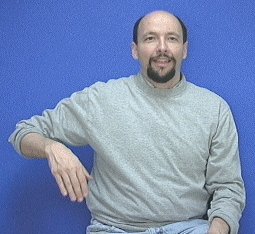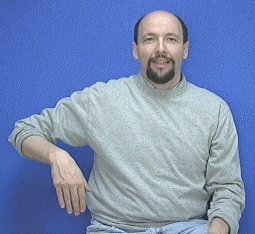American Sign Language: Nonmanual Markers (NMMs)
Nonmanual markers consist of the various facial expressions, head tilting, shoulder raising, mouthing, and similar signals that we add to our hand signs to create meaning.The sign for nonmanual markers is to fingerspell "NMM."
Examples of nonmanual markers:
1. Slightly opening the mouth and placing the tongue over the bottom teeth so that it touches the lower lip. This nonmanual marker is used with the sign, "NOT-YET."
2. Bringing your cheek and your shoulder closer together while tightening the muscles in your cheek (as if you were smiling with half your face). This is often abbreviated as "c-s" meaning "cheek to shoulder." This nonmanual marker is used with signs like, "RECENT" and "THERE" to mean, "very recent" and "right there (close)."Speakers of English tend to inflect their voices to indicate they are asking a question. Signers of ASL also inflect their questions, but instead of using voice inflection they use non-manual markers. For example:
YES/NO Question Expression:
When signing a question that can be answered "yes or no" you raise your eyebrows and tilt your head forward a bit.
"WH-Q" Question Expression:
When signing a question involving "who, what, when, where, how, how much, how many, which, or why" you use what is called a "wh" question facial expression. The "wh" facial expression "furrows" the eyebrows a bit and may tilt the head back a bit--while the body might lean forward a bit.
Here are some examples of "wh" question expression:
why
who
where
In a message dated 7/10/2005 6:15:27 PM Pacific Daylight Time, ______ writes:Dear Bill Vicars:I used your website to help deaf friends with vocabulary. I am an ASL/Deaf Studies Specialist. I also do computer graphics. I need to know where non-manuals came from? Who gave that idea as a developments. Are there any resources on history of non-manuals signals?Thank you, smileMelindaMelinda,Nonmanual Markers developed naturally as part of the language in the same way they did with spoken English. For example, "Why do you nod your head to mean yes and shake it to mean no?" It just started happening that way over time. It could have gone the other way: Bulgarians shake their head to mean yes and nod their head to mean no.
If you wish to study "nonmanual markers" in more depth you will likely find more resources by first researching "facial expressions," and "gestures."Cordially,Dr. Bill

